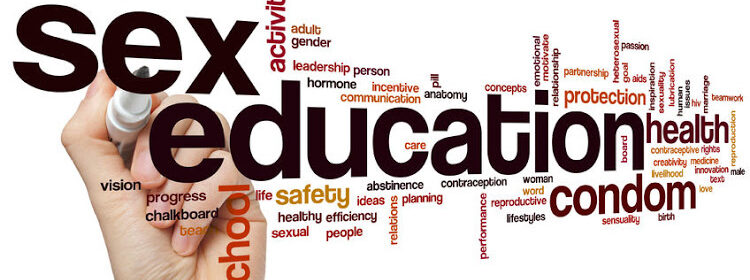Current State of Sexual Education and Inadequacies of Sexual Health Literacy

MORENIKE ISOLA – Sexual health education is an essential tool that can help our youth make more informed decisions about their reproductive health and physical well being. As the rate of numerous sexually transmitted diseases increases across the U.S., public health officials have sought to approach this issue at the educational level. If comprehensive sexual health education were integrated into all secondary school curricula, it would allow all students to understand the risks associated with unprotected sex and the measures they must take to optimize their reproductive health. Consequently, the U.S. could foresee a potential decline in the transmission of STDs and unwanted teen pregnancies because of the large demographic of adolescents and young adults becoming more proficient in sexual health literacy. As of today, there are only eight states that have laws requiring sex education to be a part of the school curriculum. Also, less than 40 percent of schools nationwide required sex and health education for graduation (CDC, 2015). This issue means that there are several states not thoroughly teaching the importance of sexual health in their schools, many of which have the highest STD rates in the country. Moreover, an overall lack of sexual education contributes to the U.S. having the highest maternal death rate, level of unintended pregnancies, and level of STDs in youth populations in the world. Therefore, our youth must be proficient in sexual health literacy, so there can be an upwards trend in the use of safe-sex practices and contraception, and so such values are instilled in the following generations.
Although the provision of mandated sexual education seems to be a promising solution, some states have endured an ongoing battle between an emphasis on sex education or the abstinence-only approach. The abstinence-only program simply informs young people that abstinence from sex is the only safe and effective way to prevent unintended pregnancies and the spread of STDs. Even so, around 30 percent of high school students report being sexually active, which further emphasizes the need for a mandated sexual health curriculum that best informs young students on how to manage their reproductive health. The federal government first began to promote abstinence-only education in 1981 under President Reagan with the Adolescent Family Life Act (AFLA) which was passed by Congress “to promote chastity and self-discipline through a family-centered approach” (Sneen, 2019). Since then, many other programs have been created, which have received a lot of funding from the federal government; in 2008, $117 million was given to these programs, a large increase from the roughly $4 million observed in 1996 (Sneen, 2019). The federal government’s long-standing support for abstinence-only education would be incredibly difficult to unravel, as its effects have been felt at federal, state, and local levels. Not only that but decreasing funding for such programs may be politically unattractive by elected officials due to religious opposition to comprehensive sex ed.
Fortunately, of all the public health issues, unprotected sexual encounters have among the most remedies. Regardless of the conventionally praised abstinence, dozens of products and medications exist to prevent the unintended outcomes of unprotected sex. This fact translates to an abundance of solutions, and thereby a myriad of approaches for public health officials. While the solution mainly focuses on mandatory instruction at the secondary school level, opportunities for public health interventions extend beyond the classroom. This approach, unlike the abstinence only agenda, is not only realistic but widely accessible. There are severe shortcomings of sexual education taught in American secondary schools. The results of such inadequacies translate to some of the highest rates of unintended and teen pregnancies as well as STIs in the developed world. Laxism and state regulation is the stance that the federal government has adopted in recent years. Left in the hands of the state governments, legislation and implementation of sexual education, has been far too lenient, notably due to pushback for religious and conservative lobbying organizations. Drastic reform is needed to reduce these rates. Only then can we rest assured that our youth will experience a surge in reproductive health and physical well being.
Copy Editor: Courteney Malin
Photography Source: Bianca Patel, https://sexploitation.co.za/cse/things-hot-up-as-motshekga-backs-sex-ed-official/
